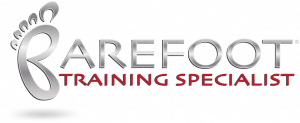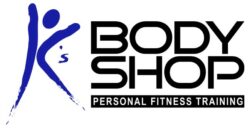 Barefoot and minimalist training has become all the rage over the last few years, especially among the running community. As a certified Barefoot Training Specialist who specializes in corrective and post-rehab exercise, I must remind you that barefoot running and barefoot training are NOT the same thing (though folks who are interested in transitioning to unshod or minimalist running would be wise to do a little prep work first). I’ll save the discussion weighing the risks and benefits of barefoot running for another post. This post will illustrate how barefoot training can be beneficial for anyone with feet – no matter what their age, gender, or fitness level. Here are the top 5 benefits of barefoot training in no particular order:
Barefoot and minimalist training has become all the rage over the last few years, especially among the running community. As a certified Barefoot Training Specialist who specializes in corrective and post-rehab exercise, I must remind you that barefoot running and barefoot training are NOT the same thing (though folks who are interested in transitioning to unshod or minimalist running would be wise to do a little prep work first). I’ll save the discussion weighing the risks and benefits of barefoot running for another post. This post will illustrate how barefoot training can be beneficial for anyone with feet – no matter what their age, gender, or fitness level. Here are the top 5 benefits of barefoot training in no particular order:
Improve Core Activation
What exactly is the core and why does it matter? The core is much more than just your abdominals – it also includes the spinal stabilizers, pelvis, hips, and shoulder girdle. Basically, everything except your extremities. When you activate the intrinsic muscles in your feet, it creates a chain reaction that also activates muscles deep in your pelvis, hip, diaphragm and trunk. This results in more reflexive stability of your entire body, making movement more efficient. Moving with greater efficiency means it takes less effort to do the same amount of work. Think of walking in deep sand versus on a firm surface to go the same distance.
Improve Posture
Your feet are your foundation! This is where we interact with the ground when standing, so a stable foundation results in better postural control. Improved core activation also helps to improve posture without you really having to think about it. When the deeper core muscles are activated, you’ll be standing straighter simply because of which muscles are automatically co-activated: pelvic floor, deep six in the hips, TFL, psoas, diaphragm, etc. Better posture also results in greater movement efficiency, meaning better performance and less chance of injury caused by muscle imbalances. Cool, huh?
Improve Balance
There are several different types of receptors in the skin on the bottom of your foot that send messages to your brain that help you know where you are in three dimensional space. Some detect deep pressure, some detect vibration, some detect light touch, some detect stretching of the skin on the bottom of your foot. These receptors diminish in their numbers and efficiency with age, so it’s a “use it or lose it” type of deal. Most of us have spent the majority of our lives with our feet encased in shoes that provided support, making our foot muscles weaker and our proprioceptors less efficient. Shoes also act as a filter that prevent the information provided by the ground we’re standing on to get to those aforementioned receptors in the plantar skin and the brain. Try doing intricate needlework while wearing three pairs of thick gloves – you get the idea. So, kick off the shoes and socks and walk around on different surfaces: carpet, hard floor, grass, concrete. Wake up those receptors and muscles in your feet to help improve your balance!
Faster Firing Response of Muscle Activation Sequence
Many of my runners come to me after having the same recurring injuries that they haven’t been able to clear up. Often times the culprit is a delayed firing response of the muscles in the posterior chain or core caused by muscle imbalances (usually, caused by too much sitting at work). Activating the intrinsic muscles in the feet can actually speed up this firing response as well as improve hip joint centration. One study has been reported to show a 200% increase in the speed of activation of gluteus medius after only a week of doing short foot for 15 minutes a day, though I have not been able to locate that study to see the finer details. Pretty impressive!
Improve Absorption of Ground Reaction Forces
Improving activation, strength and endurance of the abductor hallucis muscle helps support the longitudinal arch in your foot, which is especially important for those who over-pronate. It helps your foot absorb shock while preventing collapse of the medial arch. Again – greater efficiency for better performance and decreased risk of injury all the way up the kinetic chain from where your body interacts with the ground: your foot.
How To Do Short Foot Exercise
You can do it seated or standing, though you’ll get the most bang for your buck doing it standing on one leg (you can hold on to something if balance is an issue).
Make sure your subtalar joint is neutral (you are not over prontated or over supinated). Keep a slight bend in the knee. Activate pelvic floor, spread toes to find your foot tripod, then press your great toe down into the floor followed by the lesser digits. Be sure not to curl your toes! Hold for 10 seconds and repeat 3 to 5 times. That’s the basics!
Want to learn more? Give me a call if you’re in the Minneapolis area and want to get the benefits of barefoot training! Barefoot training can be a great group activity as well as part of an individual corrective exercise or post-rehab program! Perfect for running groups or those who wish to improve their balance 🙂
